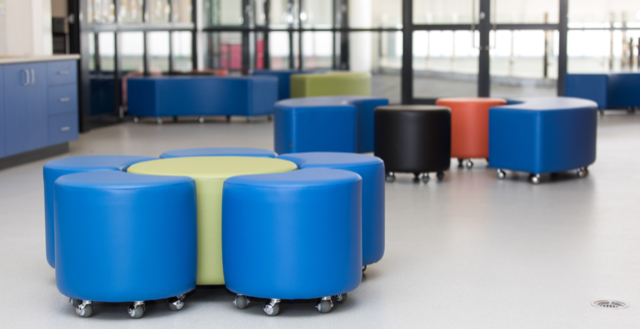
Choosing Furniture for a Next-Generation Learning Space
Designing next-generation learning spaces requires a bit of planning. This is because there are many factors to take into consideration before creating the best learning environment. Students who spend time in these spaces are dynamic, active, and insightful. It’s important to provide furniture and tools that provide multiple functions and uses to all who engage with the environment.
Here are 8 important things to consider when choosing furniture for next-generation learning spaces.
1. Mobility
Higher education classrooms are often filled with furniture that can be easily moved. This is important when setting up a workspace for students who are engaging in hands-on learning. Mobile furniture allows students to participate in many different activities.
2. Storage
Invest in furniture that provides ample storage space and secure locations where students can keep their personal items. Drawers or lockers might be something to consider.
3. Workstations
Classrooms are sometimes set up as workstations, or zones where groups of students come together to work on a project. You might need to set up several stations within this learning environment. What kind of furniture would work best for that?
4. Ergonomics
Ergonomics is the study of the efficiency and comfort of students in the classroom. Sitting in a bad-quality classroom chair all day can lead to back problems and other medical issues. A well-made office chair can keep the back supported so you don’t suffer from any physical pain. Make sure the furniture you choose for the classroom is ergonomically correct.
5. Height Diversity
Students should be able to access tools and resources at multiple levels, as well as choose pieces of furniture that they feel most comfortable in. Mix up the type of furniture, seating, materials, and height levels so students have the freedom to pick whatever will help them learn better.
6. Flat Writing Surfaces
Students will always need a flat surface to write on. Desks with whiteboards are even more helpful as they are a direct surface that can be written on. Make sure there are always available tools for students to write on and with.
7. Color
Students of all ages react to colors differently. Studies show that a display of different colors can stimulate different parts of the brain, encouraging learning. Find a balance of bright and neutral colors to make it a pleasant learning environment.
8. Texture
The fabrics and textures you choose can have a huge impact on students. People are stimulated by touch as much as they are by sight, so it’s important to incorporate different textures that can help everyone feel comfortable. You also want to consider things that don’t easily tear or stain.
Trackback from your site.


